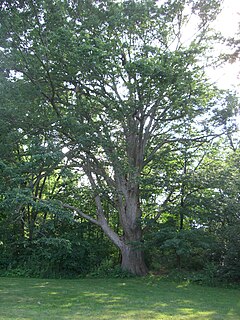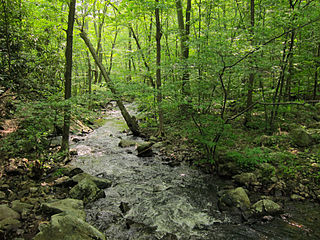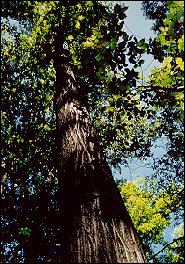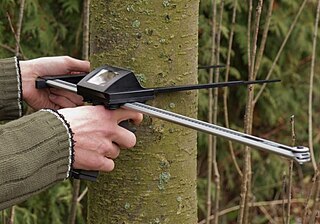This article needs additional citations for verification .(March 2008) (Learn how and when to remove this template message) |
Site tree refers to a type of tree used in forestry, which is used to classify the quality of growing conditions trees at a particular forest location. A site tree, is a single tree in a stand (group of growing trees) that gives a good representation of the average dominant or co-dominant tree in the stand. Site trees are used to calculate the site index of the site in reference to a particular tree species. A site tree should belong to the dominant or co-dominant overstory class. [1] The total height of the tree and age measured at Diameter at breast height of a sample of site trees will be used to determine a site index, which will show how tall trees of different species can grow on that site in a set amount of time. Sometimes several years are added to the breast-height age to account for time grown below 4.5 feet (1.4 m).

Forestry is the science and craft of creating, managing, using, conserving, and repairing forests, woodlands, and associated resources for human and environmental benefits. Forestry is practiced in plantations and natural stands. The science of forestry has elements that belong to the biological, physical, social, political and managerial sciences.

In botany, a tree is a perennial plant with an elongated stem, or trunk, supporting branches and leaves in most species. In some usages, the definition of a tree may be narrower, including only woody plants with secondary growth, plants that are usable as lumber or plants above a specified height. Trees are not a taxonomic group but include a variety of plant species that have independently evolved a woody trunk and branches as a way to tower above other plants to compete for sunlight. Trees tend to be long-lived, some reaching several thousand years old. In wider definitions, the taller palms, tree ferns, bananas, and bamboos are also trees. Trees have been in existence for 370 million years. It is estimated that there are just over 3 trillion mature trees in the world.
Site index is a term used in forestry to describe the potential for forest trees to grow at a particular location or "site." Site is defined as “The average age of dominate and/or codominate trees of an even-aged, undisturbed site of intolerant trees at a base age”; furthermore, the word site is used in forestry to refer to a distinct area where trees are found. Site index is used to measure the productivity of the site and the management options for that site and reports the height of dominant and co-dominant trees in a stand at a base age such as 25, 50 and 100 years. For example, a red oak with an age of 50 years and a height of 70 feet (21 m) will have a site index of 70. Site index is species specific. Common methods used to determine site index are based on tree height, plant composition and the use of soil maps.
Determining what a site tree should look like in a stand varies with what kind of stand one is standing in. The simplest stand to find a site tree in is an even aged stand of a single species, much like a forest plantation. In this stand almost any dominant or co-dominant tree can be used. Finding a site tree is more difficult in uneven-aged, mixed species, stands.
In biology, a species ( ) is the basic unit of classification and a taxonomic rank of an organism, as well as a unit of biodiversity. A species is often defined as the largest group of organisms in which any two individuals of the appropriate sexes or mating types can produce fertile offspring, typically by sexual reproduction. Other ways of defining species include their karyotype, DNA sequence, morphology, behaviour or ecological niche. In addition, paleontologists use the concept of the chronospecies since fossil reproduction cannot be examined. While these definitions may seem adequate, when looked at more closely they represent problematic species concepts. For example, the boundaries between closely related species become unclear with hybridisation, in a species complex of hundreds of similar microspecies, and in a ring species. Also, among organisms that reproduce only asexually, the concept of a reproductive species breaks down, and each clone is potentially a microspecies.
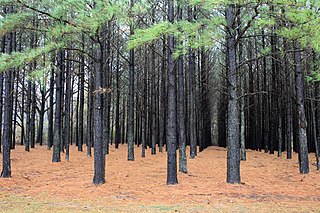
A plantation is the large-scale estate meant for farming that specializes in cash crops. The crops that are grown include cotton, coffee, tea, cocoa, sugar cane, sisal, oil seeds, oil palms, rubber trees, and fruits. Protectionist policies and natural comparative advantage have sometimes contributed to determining where plantations were located.
There are multiple assumptions that are made when a site tree is chosen. Each site tree is assumed to have been a dominant or co-dominant individual its entire life. The site tree is assumed to have never been broken, injured, or suppressed. If the tree had any of these things happen to it the site index, which is derived from the site tree, value will be skewed.
Site trees are chosen by what species is being grown in a particular forest. Different trees on the same site will produce different measurements of a site index. For example, a yellow-poplar ( Liriodendron tulipifera ) [2] growing on the same site as a white oak ( Quercus alba ) [3] will grow at a different rate over the same amount of time. Graphs have been made that allow the user to measure a site tree of specific species and then use that measurement to predict what the measurements of a site tree of another species would be on the same site. This allows the user to predict how one species would grow on a site if that species was planted on the site. This is especially useful for timber production, harvest operations, or any other forestry silvicultural management that has specific species regeneration as a goal of the management plan.

Liriodendron tulipifera—known as the tulip tree, American tulip tree, tulipwood, tuliptree, tulip poplar, whitewood, fiddletree, and yellow-poplar—is the North American representative of the two-species genus Liriodendron, and the tallest eastern hardwood. It is native to eastern North America from Southern Ontario and Illinois eastward to southeastern Massachusetts and Rhode Island, and south to central Florida and Louisiana. It can grow to more than 50 m (160 ft) in virgin cove forests of the Appalachian Mountains, often with no limbs until it reaches 25–30 m (80–100 ft) in height, making it a very valuable timber tree. It is fast-growing, without the common problems of weak wood strength and short lifespan often seen in fast-growing species. April marks the start of the flowering period in the southern USA ; trees at the northern limit of cultivation begin to flower in June. The flowers are pale green or yellow, with an orange band on the tepals; they yield large quantities of nectar. The tulip tree is the state tree of Indiana, Kentucky, and Tennessee.

Quercus alba, the white oak, is one of the preeminent hardwoods of eastern and central North America. It is a long-lived oak, native to eastern and central North America and found from Minnesota, Ontario, Quebec, and southern Maine south as far as northern Florida and eastern Texas. Specimens have been documented to be over 450 years old.

Silviculture is the practice of controlling the growth, composition, health, and quality of forests to meet diverse needs and values.
